“No, I don’t want any more elaborate Kindergarten materials… if the child is left to himself, he will think more and better, if less showily. Let him go and come freely. Let him touch real things, and combine his impressions for himself, instead of sitting indoors at the little round table, while a sweet voiced teacher suggests that he build a stone wall with his wooden blocks, or make a rainbow out of strips of coloured paper, or plant straw trees in bead flower pots. Such teaching fills the mind with artificial associations that must be got rid of before the child can develop independent ideas out of actual experiences.”
Annie Sullivan, teacher to Helen Keller
“Let’s go down to the little creek and do our reading there,” I suggested to the girls and little boy, one grey morning. Learning and reading outdoors is always so much more enjoyable to everyone. Not only that, but little ones can play, join us or wander and discover peeping frogs and muddy puddles while the sisters sound out new words and learn about articles, adverbs and prepositions. Yes, schooling outdoors is a favorite of mine.
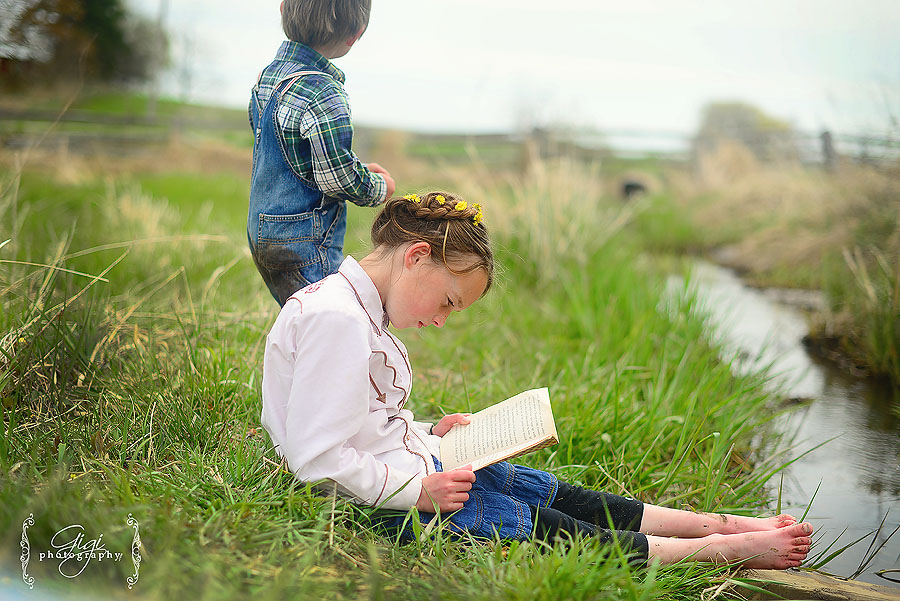
Our little creek is just that – little. It’s a run off from the farmer’s field beside us. It’s not magnificent by any standards, but it is wonderful to us. It always has something interesting in it and the little ones (and big ones) like to dip their feet into the cool water and giggle and laugh as the freezing cold water tickles their dirty toes. We have found many interesting insects, even a newt or salamander or two, in this shallow water.
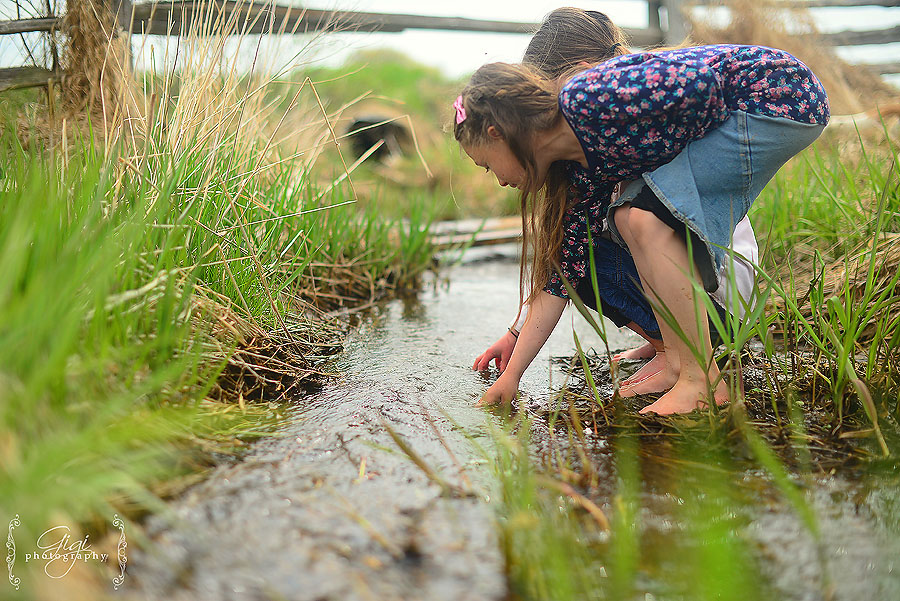
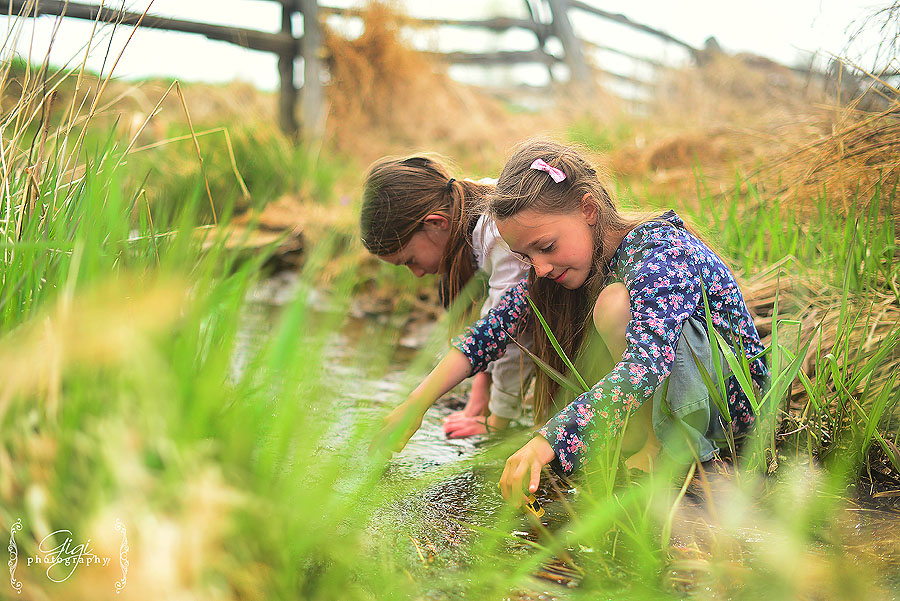
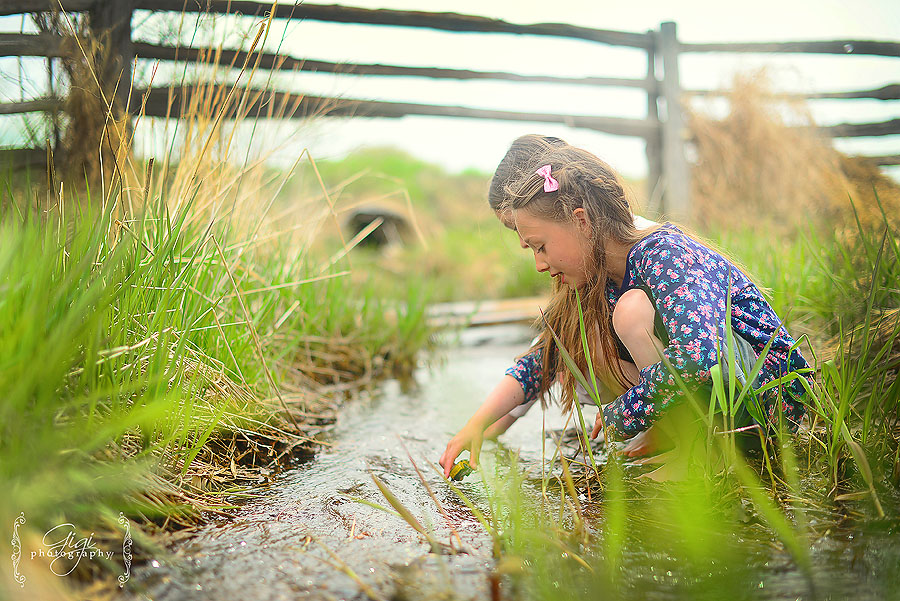

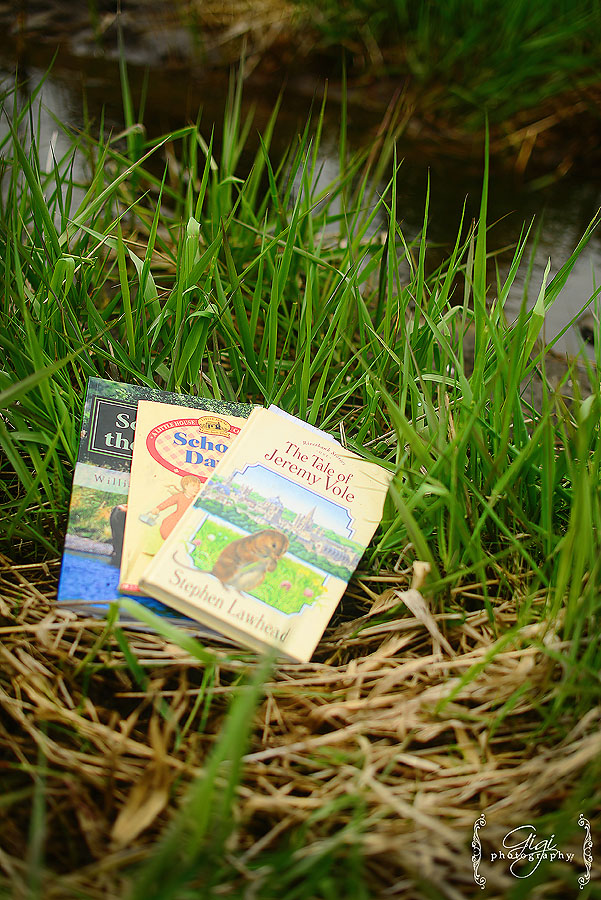
We are reading The Tale of Jeremy Vole as our little one’s chapter book – it is a sweet story about a river vole who needs to warn the riverbank dwellers of an upcoming flood. It seems so appropriate to read the charming English book with a tiny little “river” bubbling away in front of us. It does make the fictional story seem so much more alive to little ears.
Once our short lesson was over, the children were free to wander, play and discover.

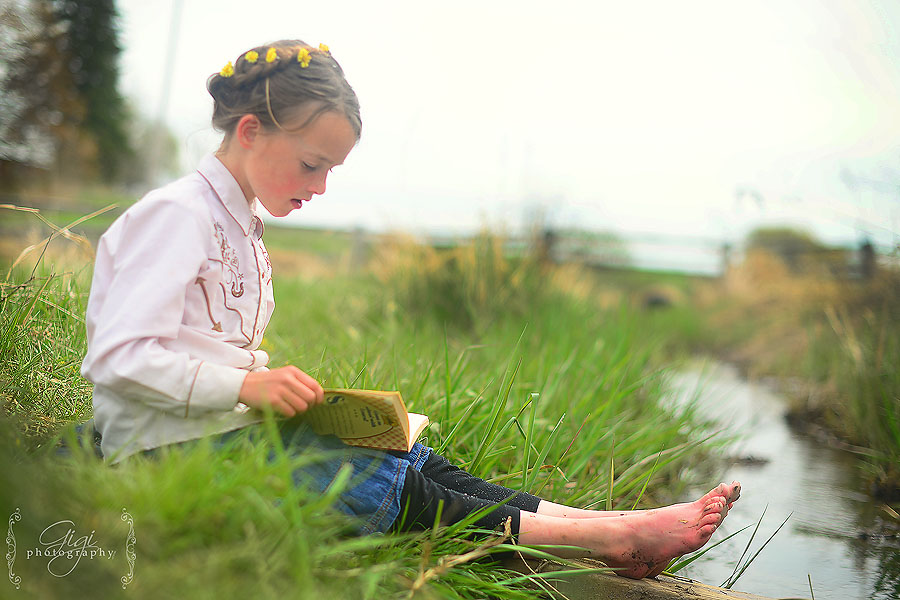
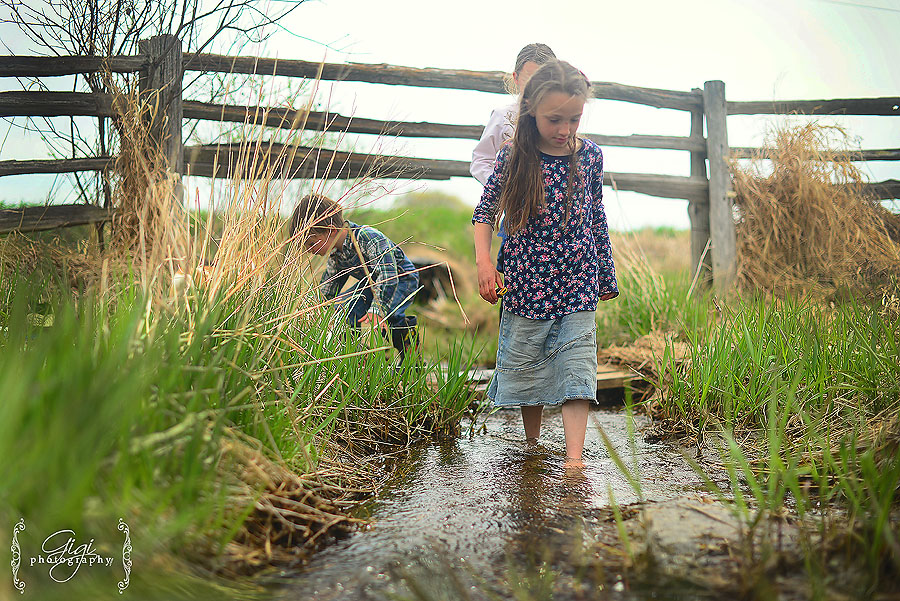
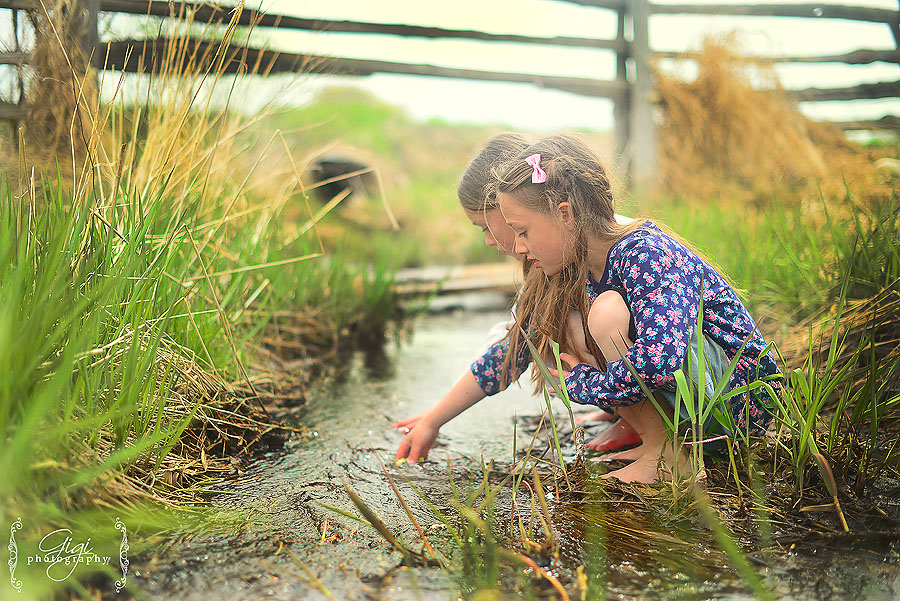
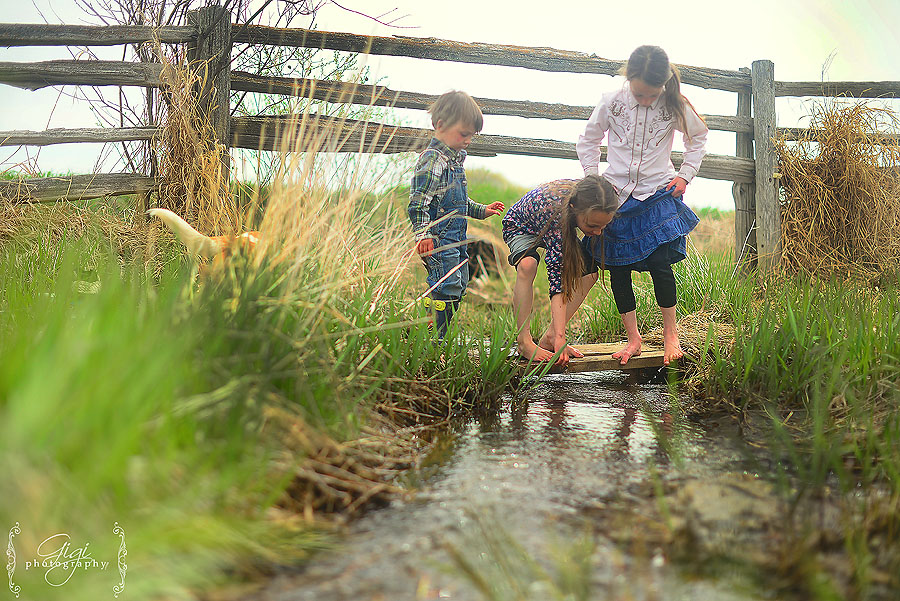
Later that week, the children and I were doing an errand at a local greenhouse – we were taking a country road home when we spotted a cheerful path of “giant buttercups” all over the ditch and wet, marshy areas near the road.
“I believe that’s marsh marigold, mommy,” one of the girls pointed out, as we noticed the bright yellowed flowers decorating the field and areas close to the road.
The older girls were able to quickly recognize the flowers because of a book we had read together last year … it was decided upon that we would return with a shovel and a few buckets and replant some of these pretty cheery flowers in our marshy area of our yard. And so we did …. now there are a few marsh marigolds growing down in our wet spots in the shady corner of our yard … we were also able to share some with our neighbour who also has a wet patch in her yard.
A young mother visited recently and asked about kindergarten for her little child … oh, how passionate I feel about keeping your child with you at home, especially for those tender kindergarten years … instead of shuffling them off to a large – or even small and brightly lit and seemingly exciting – school room. There is much to learn at home with the mother, if the mother will take the time to engage the child and open up a world of learning in the small wonderful backyard and kitchen of her home.

In reference to outdoor time with mother and child from the Charlotte Mason Home Education, Volume 1:
“They must be let alone, left to themselves a great deal to take in what they can of the beauty of the earth and heavens; for of the evils of modern education, few are worse than this – that the perpetual cackle of his elders leaves the poor child not a moment of time, nor an inch of space wherein to wonder- and grow. At the same time, here is the mother’s opportunity to train the seeing eye, the hearing ear, and to drop seeds of truth into the open soul of the child, which shall germinate, blossom, and bear fruit, without further knowledge or help of hers. Then, there is much to be got by perching in a tree or nestling in heather, but muscular development comes of more active ways, and an hour or two should be spent in vigorous play; and last, and truly least, a lesson or two must be got in.”
-Home Education, Outdoor Life for the Children
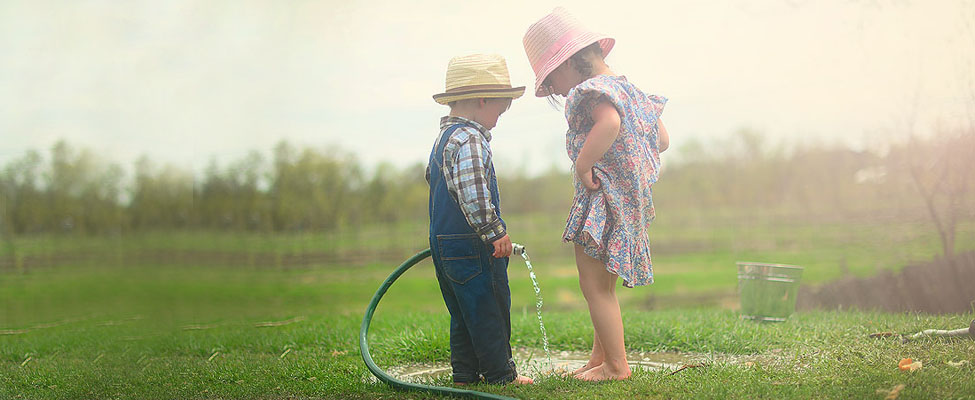
by Gigi
8 comments